How to define LPWAN Technologies?

LPWAN is one wireless telecommunication WAN that is developed to allow long-range communication at a lower bit percentage. A majority of LPWAN technologies are capable of achieving network coverage of several kilometers or even tens of kilometers. Because of its wide network coverage and low power consumption of the terminals, it is more fitting for the deployment of large-scale IoT applications.
Compared with the traditional Internet of Things technologies, LPWAN technologies own distinctive strengths. The LPWAN technologies possess longer distances which are in contrast to other wireless connection technologies like Bluetooth, WiFi, Zigbee and 802.15.4. What’s more, It owns a lower power consumption connection compared to cellular technologies(such as GPRS, 3G and 4G).
The working principles of LPWAN
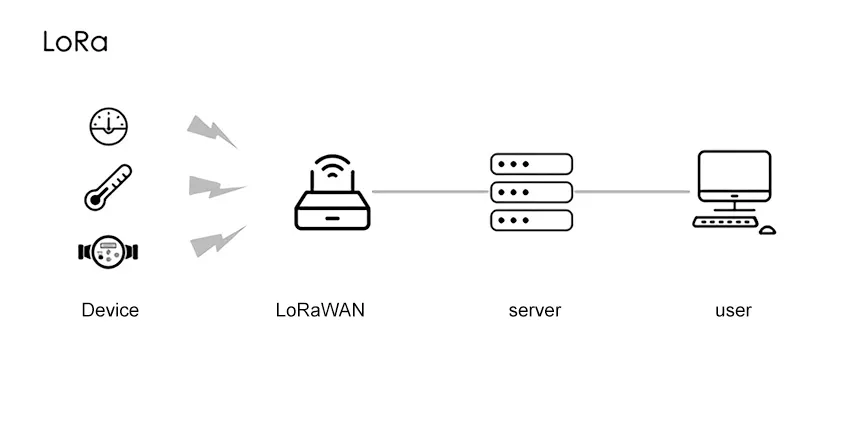
The Wize technology, which originates from the European Standard EN-13757 Wireless M-bus, refers to LPWAN network technology. Defined by the Wize Alliance, The Wize technology refers to one type of Internet of Things standard, which mainly focuses on the applications like wireless metering, intelligent cities and industrial IoT.
The Wize is operating in the 169 MHz frequency band, which functions as a license-free frequency band in Europe. As it utilizes a low frequency band with long wavelengths and strong penetration ability of buildings and barriers, its path loss is greatly decreased, leading to a longer transmission range of up to twenty kilometers. The Wize agreement is a two-way agreement that allows the transfer and receiving information of up to 246 bytes and allows firmware update to be conducted remotely to the networked device. Due to its short message transmission of the Wize, relevant devices are needed to be turned on for only a few minutes. And the battery life can be lasted for up to 20 years. What’s more, Wize owns the features of end-to-end encryption, ensuring the highest level of security.
What are the wireless technologies included in LPWAN? (four wireless technologies)
The main technical features of the Wize:
- The range of frequency band ranges from 169.4 MH to 169.475 MHz, with an entire bandwidth of 75 kHz.
- Radio spectrum is categorized into 6 channels (five uplink, one downlink), 12.5 kHz per channel.
- Bio-directional communication of 256 bytes uplink as well as 256 bytes downlink.
- Extendable debugged and demodulated functions, the software defining radio (GFSK and 4GFSK).
- Communication time, service cycle for ten percent, six minutes per hour.
- Communication rate range from 2400bps to 6400bps.
- Communication distance is up to 50km or the outdoors, up to ten km or more indoors, the depth coverage of the indoor range from 2.5km to others.
- Security encryption, AES128.
- Lower daily communication capacity (five to ten times), extremely lower power consumption, and the small lithium batteries is able to give power to remote meter reading devices for fifteen to twenty years.
- An agreement mechanism enables the schedule and execution of the equipment firmware updates with a broadcasting radio.
Does LoRa technology belong to LPWAN?
LoRa, which remains one of the LPWAN networked communication technologies, refers to a unique modulation format generated by Semtech’s RF part based on spreading spectrum technology for ULR wireless transmission, which is utilized and enhanced by Semtech.
The core chips of LoRa Radio Frequency section include the SX1276 as well as the SX1278. The integration of chips features small scale and highly efficient so as to bring high receptive sensitivity to the LoRa wireless module.
The gateway chip is equipped with SX1301, which is more integrated and has more passageways, and the LoRa gateway combined with SX1301 as the key is able to vreate a complicated multi-node IoT self-organizing network with a lot of LoRa modules.
Does NB-IoT technology belong to LPWAN?

NB-IoT technology functions as an LPWA (Low Power Wide Area Network) solution with the following benefits:
Massive connections: In the same compound, NB-IoT can provide 50~100 times more access than the existing wireless technologies, which is up to 100,000 connections.
Ultra-low power consumption: NB-IoT devices consume little power and can guarantee a battery life of more than five years.
Deep coverage: NB-IoT improves 20dB gain over LTE and improves coverage capacity by 100 times, enabling deep coverage of environments that are difficult to be reached with traditional wireless signals.
Security and reliability: It supports two-way authentication and strict encryption of air ports to achieve carrier-grade reliable access.
Does LTE-M technology belong to LPWAN?
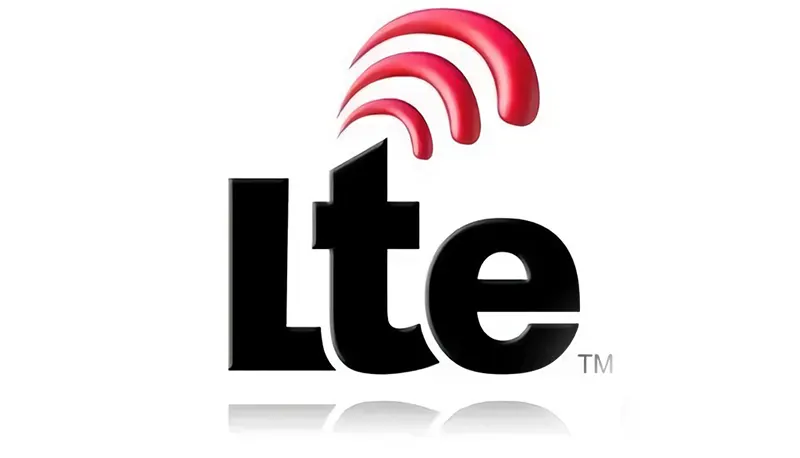
LTE-M, which means Long Term Evolution Machine Type Communications Category M1, or LTE MTC Cat M1 as well as LTE-M, is an LPWAN technology standard announced by the 3GPP in Release 13 of the specification. LTE-M is an LPWAN technology to provide support for IoT by decreasing device complexity and offering an extended covered range while enabling the reutilization of LTE installation infrastructure. Battery life of up to over ten years and the modem prices lowered to 20 to 25% of the existing EGPRS modem.
Does Sigfox technology belong to LPWAN?

Sigfox is an ultra-narrowband (UNB) technology. The features of frequency hopping, frame repetition and multi-base station connectivity make it highly resistant to interference. Sigfox uses a radio access scheme that allows communication in any industrial, scientific, and medical (ISM) radio band. For instance, the European region utilizes a wide 192 kHz spectrum at 868 MHz for deployment and ensures 100 Hz channel bandwidth for uplink communications. To realize extremely low power consumption, communication with the device is only possible for some short periods of time such as when the device turns on its receiver after sending a message.
Does WIFI technology belong to LPWAN?
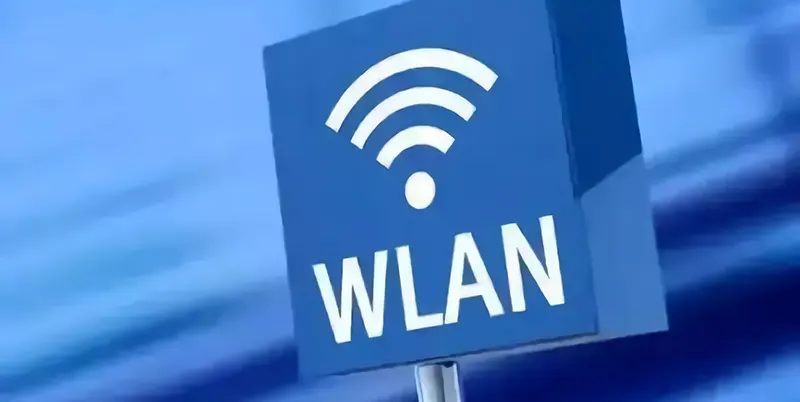
Wi-Fi, also referred to as Wireless Fidelity, is a wireless fidelity technology. It is a technology that enables a terminal such as a PC and handheld equipment (e.g., PDAs and cell phones) to be interconnected to each other in a wireless manner.
Wi-Fi refers to a brand of a wireless network communication technique managed by the WiFi Alliance to enhance interconnectivity between the wireless networked items on the basis of the IEEE 802.11 standard.
In the context of wireless LANs, it stands for “wireless compatibility certification”, which is crucially a commercial certification and a technology for wireless networking.
The strengths & drawbacks of LPWAN Technologies
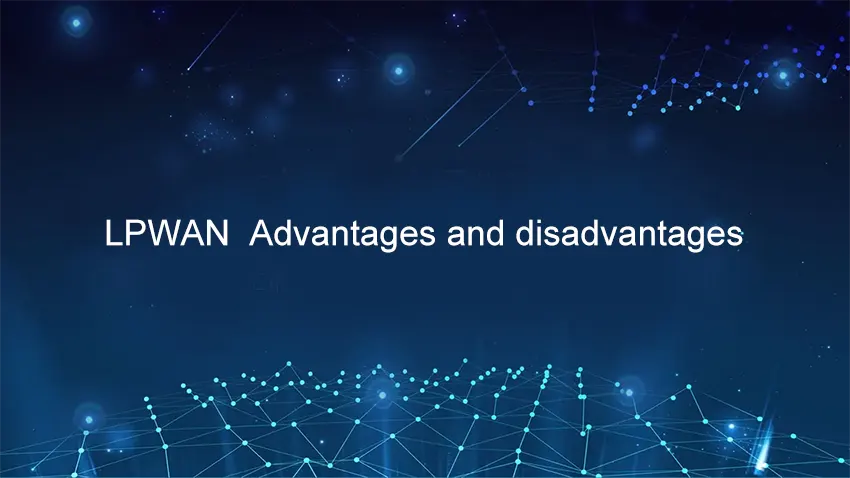
Some main strengths of LPWAN technology:
Long range, wide coverage up to tens of kilometers.
Lower power consumption, the battery life is able to be lasted for up to ten years.
Low data speed rate, small bandwidth consumption, low data capacity and low frequency of communication
Transmission delay is not sensitive, and the requirement for real-time data transmission is not high
Low cost, low cost of deployment due to large-scale requirements
Gateway or base station, large coverage area, the low number required for network infrastructure construction
As most of the technologies work in Sub-GHz bands, the network signal penetration is strong
The challenges of LPWAN
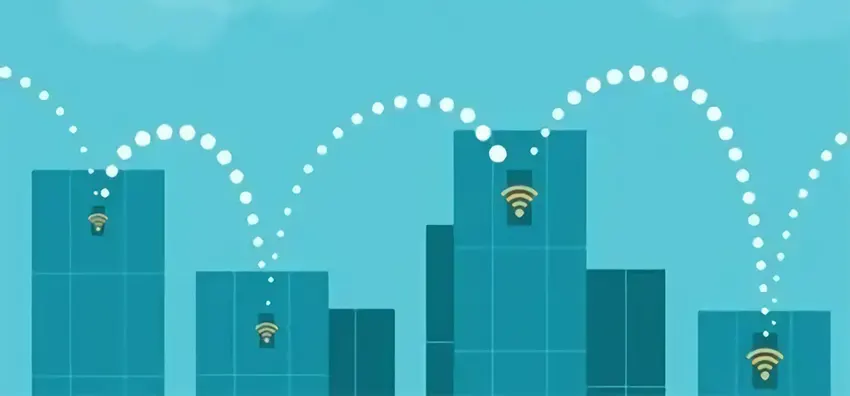
The too-closed architecture of the traditional wide-area network makes it difficult to achieve multi-cloud interconnection.
In the following years, cloudiation is the development trend. A majority of enterprises will deploy their business to the cloud. In order to access cloud applications, enterprise WAN has to interconnect with public cloud, private cloud and SaaS cloud, and the closed traditional WAN architecture can hardly satisfy the interconnection requirements of multiple clouds. Moreover, the migration of enterprise business to the cloud will inevitably make enterprise WAN carry more and more cloud-related application traffic, and traditional WAN networks can hardly support the surge of WAN traffic.
More and more flexible networking makes it difficult to achieve diversified interconnections
Globalization makes enterprises’ branches more and more widely distributed, and different branches have different requirements for networks. For instance, some need multi-layer networks, some need flat networks, some need branch site networks with multiple uplinks (more than 5), and some need networks with multiple HUBs (more than 4). Facing such a complicated network, it is hard for traditional WAN networks to achieve flexible networking and meet the demand of diversified interconnection of enterprises.
The dramatically increased number of applications makes it hard to guarantee the application experience
In the time of cloud and digitalization, a large number of emerging enterprise businesses closely integrated with cloud computing are flourishing, and the number and types of enterprise applications are exploding, such as voice, video, file transfer, email, and SaaS applications, etc. Different applications have different requirements on link quality. Traditional enterprise private lines cannot differentiate services. What’s more, the newly added Internet network is not capable of ensuring the quality of services. Therefore, when there is sudden traffic congestion or link quality deterioration, the experience of critical services cannot be guaranteed.
Difficult network operation and maintenance make it easy to generate errors when the configuration is completed manually
Under the traditional model, the service turn-up requires networking engineers to go to the site for manual configuration. The network operation and maintenance as well as fault locating also require certain personnel to operate on site. Therefore, the efficiency of service turn-up and network operation and maintenance is low with high cost. In the tide of digitalization and globalization, the branches of enterprise WAN networks are more widely distributed, more numerous, and the services carried are more complex, and the operation and maintenance are more difficult. The traditional manual configuration and operation and maintenance methods can hardly satisfy the needs of rapid business development.
What is LPWAN Used for?

LPWAN technology can be applied to various industries, such as Smart Industries, Smart Utilities, Smart Cities, Smart Buildings, etc.
Smart Industry – including asset tracking, asset process automation, discrete automation, environmental monitoring, industrial lighting, commercial security, infrastructure monitoring, water management and various other applications, and more.
Smart utilities – including intelligent management of water, electricity and gas, the most important part is smart metering.
Smart City – includes applications related to the management of municipal resources and services. Cases cover street lighting, waste control, parking lot management, environmental detection, traffic monitoring, emergency management and public transport control.
Smart Building – Smart buildings involve building automation, including applications related to HV or AC (heating, ventilation, air conditioning), energy control, security, lighting, and room automation.
Currently, LPWAN applications are mostly battery-powered applications. Due to its low communication frequency and small data volume, the battery can generally work for several years or even ten years. What’s more, it can be powered by energy gathering including solar energy. LPWAN technology offers a new option for IoT scale application deployment, which will surely bring great advancement to IoT applications.
The solutions for LPWAN Technologies

Product Change – From a product perspective, LPWAN-related products are no longer a single product but rather a systematic product. It includes sensing terminals, gateways (or base stations), network servers, and application service software.
Change of service – The change of product extends the scope and form of service.
Changes in operators – Cellular and non-cellular based LPWAN technologies have emerged. Cellular technologies, such as NB-IoT and LTE-M, no longer define narrowband IoT in terms of traffic charges for operators, but rather in terms of the number of connections. For example, the NB-loT tariff package introduced by Telecom is based on the “number of connections”, using a package model, which specifies a certain number of connections within the package, and charges separately for the number of connections beyond the package. The open standard LoRa non-cellular technology has given several companies more freedom to develop and operators based on LoRa network services have emerged.
The value of data – LPWAN technology enables large-scale connectivity of things, and data is transmitted to cloud servers, which brings new management methods to governments and enterprises based on data analysis and management.
What is LPWAN used for?

Application of NB-IoT in Animal Husbandry
The livestock industry is primarily categorized into captive breeding and stock-breeding, with the north part and west part frontiers of China being the major grazing places.
The benefits of stock-breeding include high-quality of livestock meat and lower feed costs, but leading to a lot of inconveniences in livestock management.
Artificial grazing remains the most primitive and straightway. However, there are several shortcomings:
- 1. Artificial grazing requires a person to graze, which is a waste of manpower
- 2. Artificial grazing contains safety risks, and there is a risk of being injured by wild animals
- 3. Artificial stocking is not capable of systemic management
This issue can be handled by making use of GPS plus GPRS livestock locating system. However, the individual size of the cattle and sheep herd is huge, the capacity of the GPRS communication base station will be insufficient, and the battery life will be problematic. Moreover, the farms are relatively remote, and the signal coverage strength will be problematic.
The Application of NB-IoT in remote meter reading
Water and gas meters are closely associated with our daily lives and are applied to each family.
The most primitive approach is to manually read the meter statistics at home. With the fast growth of society, manual meter reading has given rise to a variety of shortcomings.
- 1. Low efficiency
- 2. High labor cost
- 3. Error-prone data recording
- 4. Owners are wary of strangers and cannot enter the door
- 5. Difficult to maintain and manage, etc.
GPRS remote meter reading emerged. It can cope with a lot of issues of manual meter reading, and is more well-developed, efficient and secure than the manual meter reading technology.
The Application of NB-IoT in manhole covers monitoring
The city is undergoing fast construction and the underground works set up by municipal public infrastructures are rising so the increase of manhole covers is inevitable.
The manhole cover plays an important role. For instance, if we can’t get the information on manhole cover status in time, it will potentially cause great loss of people’s life and property.
At present, the majority of cities are monitored and inspected by manual check. However, because of the huge number of manhole covers, and the low efficiency of manual inspection, it is often impossible to get the status information of manhole covers in time and accurately, which leads to all kinds of safety hazards.
With the popularity of the smart home industry in the past few years, the utilization rate of the smart lock in daily life is also boosting.
At present, the smart lock utilizes a non-mechanical key as the technology of user identification ID.
Mainstream technologies are proximity card, fingerprint identification, password identification, facial recognition and so on, which substantially enhances the security of access monitoring.
But the precondition of the above safety is the state of power. If a smart lock is in a power failure situation, then the smart lock is virtually not useable.
In order to enhance security, the smart lock needs to have a built-in battery to collect basic data, and then transfer the data to the servers If there is abnormal data collected, it automatically issues a warning to the users.
As it is difficult to disassemble after the installation of a smart lock, the battery life of a smart lock is required to be long enough.
Since the door location is in a closed building, then stronger signal coverage is required to ensure real-time network data transmission.
The number of intelligent home terminals is large and enough amount of connections have to be ensured.
The most vital thing is that after the addition of the above traits, it can also ensure that the cost of the device is under control under a suitable range.
The History of Low-Power Wide-Area Network
European Radio Messaging System refers to a European common radio paging standard invented by European Telecommunications Standards Institute in 1990, which took use of the 169 MHz RF band. The Meeting of European Postal and Telecommunications Authorities and the Electronic Communications Committee (ECC) came up with the decision to distribute the frequencies to other new scenes covering remote metering reader in 2005. The radio spectrum of ISM 169 MHz in Europe is available for use and free of charge in terms of the license, which can be utilized as a free-charged license band for shorter distance equipment.
- In 2005, the WM-Bus agreement was introduced (also named aka EN13757-4 and 433 MHz and 868 MHz).
- Suez invented an AMI infrastructure for a smart water meter on the basis of the 169 MHz frequency and began its deployment in Europe.
- In 2008, Suez introduced the 1st wireless module for remote water metering working at 169 MHz.
- In 2012, GRDF came up with a decision to choose the 169 MHz frequency band for its program and achieved significant results.
- In 2013, the 1st version of the AFNOR (French Association for Standardization) Guidance for Gas Application was introduced.
- From 2014 to 2015, the High performance 169MHz multichannel modem on the basis of SDR (Software Defined Radio).
- Telecom level infrastructure, water and gas meters
- In 2017, the Wize Alliance introduced Wize Agreement 1.0.
- AFNOR of Water and Gas Metering Application Guidance was introduced.
- The Wize Alliance Link was established – CEN TC294
- In 2018, EN13757/2018 was introduced.
- In 2019, the Wize Alliance introduced Wize Agreement 1.1.
- The gas and water meters of the Wize was largely deployed in Europe, with around ten million up to now.





















